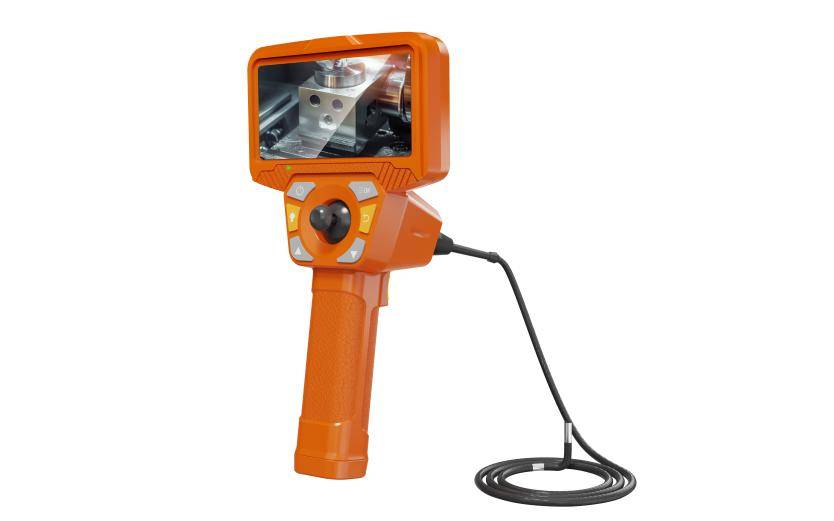Want to know more?
Don't miss any product updates on our industrial borescopes

Industrial borescope
solution service provider
Company Address
Office : 18F, Pingshanshouzuo, Pingshan District, Shenzhen,Guangdong
Contact Info
Ph: +86-0755-89588241

As a non-destructive testing tool, industrial endoscopes are widely used in the automotive aftermarket for the following scenarios, significantly improving repair efficiency and inspection accuracy:

Function: Penetrates deep into the engine through the spark plug or injector holes to inspect wear, carbon deposits, and seals on components such as the cylinder walls, pistons, and valves.
Advantages: Eliminates the need to disassemble the engine, reducing repair time and costs and enabling rapid diagnosis of problems such as abnormal noise and lack of power.
Use Cases: Detects cylinder carbon deposits and develops targeted cleaning plans; checks valve seals to prevent oil leaks.
Function: Inspects gears, bearings, synchronizers, and other components for wear, pitting, and lubricant condition.
Advantages: Assists in diagnosing faults such as shifting jerks and abnormal noises, avoiding blind disassembly.
Use Cases: Observes metal debris inside the transmission through an endoscope to determine if lubricant or component replacement is necessary. 3. Brake System Inspection
Function: Inspect brake discs and pads for wear and cracks, as well as brake line leaks.
Benefits: Ensure braking performance and prevent safety hazards such as brake failure.
Example: Detect hot spots on brake discs to assess replacement needs; inspect brake fluid line degradation.
Function: Inspect injector blockage, fuel pump condition, and fuel line leaks.
Benefits: Optimize fuel efficiency and reduce emissions.
Example: Diagnose engine shake caused by poor injector atomization; detect fuel line leaks.
Function: Inspect suspension ball joints, swing arms, drive shafts, and other components for wear and line leaks.
Benefits: Ensure driving stability and prevent chassis noise or oil leaks.
Example: Inspect suspension rubber bushings for degradation to prevent vibration during driving.
Function: Inspect hidden components such as wiring harnesses, sensors, and relays for damage or poor contact.
Benefits: Quickly locate electrical faults and reduce troubleshooting time. Case Study: Detecting fault codes caused by broken engine control unit (ECU) wiring harnesses.
Function: Assess internal damage to the vehicle frame and beams, and inspect for deformation or cracks in vehicle body components.
Advantage: Avoid structural safety hazards and ensure repair quality.
Case Study: Detect cracks in vehicle frame welds after a collision to determine if component replacement is necessary.
Function: Use an endoscope to inspect the condition of core components such as the engine and transmission.
Advantage: Provide objective evidence for used car valuations, preventing the concealment of faults.
Case Study: Inspecting the level of carbon deposits inside the engine to determine the vehicle's operating condition.
New Energy Vehicle Popularization:
Increasing demand for precision inspection of battery management systems and motor control systems is driving the use of high-precision endoscopes.
The complex internal structures of electric vehicles make endoscopes an essential inspection tool.
Endoscopes combined with AI image analysis can identify defects in real time, improving diagnostic accuracy.
Wireless transmission technology enables remote collaboration and improves repair efficiency. Maintenance Efficiency Demand:
Portable endoscopes (such as handheld ones) support single-person operation, reducing disassembly and assembly steps and lowering repair costs.
Quickly locate fault points and shorten vehicle downtime.
Stricter vehicle emission standards are helping endoscopes detect blockages or leaks in emission systems.
Industry standards require regular inspection of key components, driving the widespread use of endoscopes.
High-Definition Imaging:
4K resolution endoscopes are becoming increasingly common, improving their ability to identify subtle defects.
Optical zoom enhances long-distance inspection accuracy.
Wireless Transmission and Remote Collaboration:
Real-time image transmission via Wi-Fi or Bluetooth to mobile phones or tablets facilitates remote expert guidance.
Cloud platforms store inspection data and support historical traceability.
Artificial Intelligence Integration:
AI algorithms automatically analyze images and mark abnormal areas (such as cracks and carbon deposits).
Reducing human error and improving inspection consistency.
Portability and Durability:
Handheld endoscopes are lighter and have longer battery life, making them suitable for mobile maintenance scenarios.
Waterproof and dustproof designs adapt to harsh inspection environments.
Fourth and Fifth Future Outlook
The application of industrial endoscopes in the automotive aftermarket will continue to deepen, with key areas including:
Technology Integration: Integrating with AR (augmented reality) to enable visual guidance during the inspection process.
Application Expansion: Covering emerging areas such as hydrogen-powered vehicles and autonomous driving sensor testing.
Service Model Innovation: Endoscope rental and pay-per-use inspection services will reduce costs for small and medium-sized repair businesses.
Through technological innovation and application expansion, industrial endoscopes will become an indispensable intelligent inspection tool in the automotive aftermarket, driving the industry towards efficiency and precision.

Industrial borescope
solution service provider